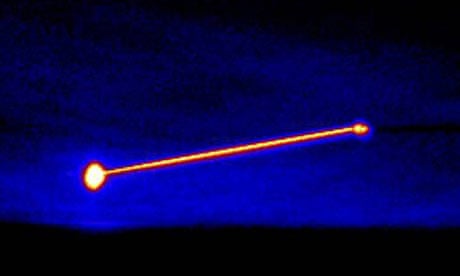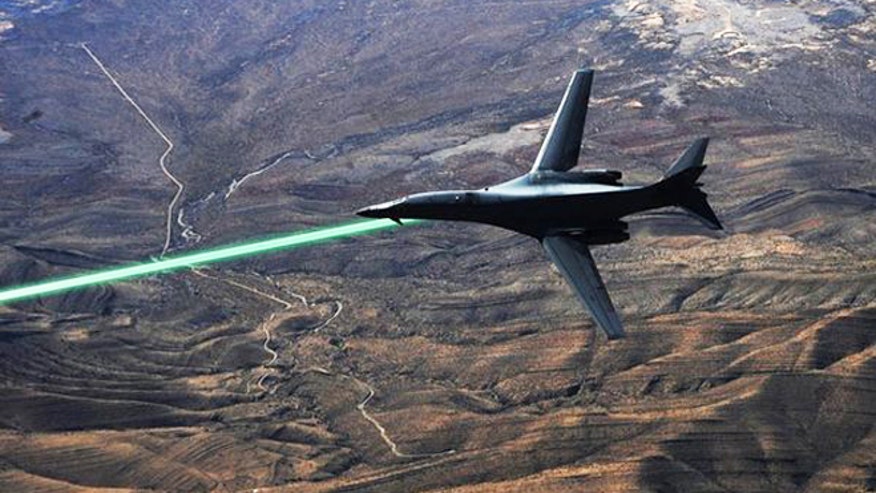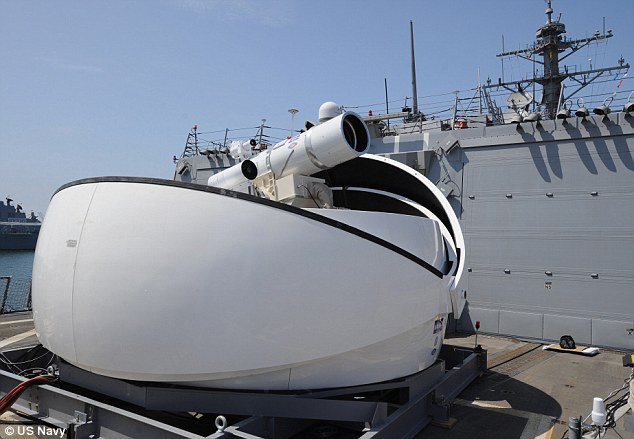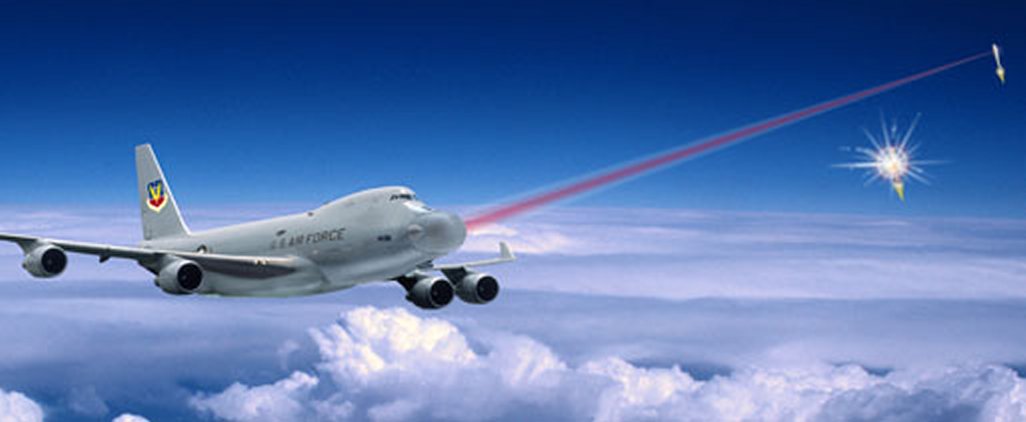RescueRanger
PDF THINK TANK: CONSULTANT

- Joined
- Sep 20, 2008
- Messages
- 16,370
- Reaction score
- 244
- Country
- Location
Google the words EMP bomb and EMP weapon, you will find out what the tech is and how it works.And what is EMP ?
Follow along with the video below to see how to install our site as a web app on your home screen.
Note: This feature may not be available in some browsers.

Google the words EMP bomb and EMP weapon, you will find out what the tech is and how it works.And what is EMP ?

A few months ago I read about it in a technical magazine. Thanks for educating others on this thread.The KALI (Kilo Ampere Linear Injector) is a linear electron accelerator being developed in India, by the Defence Research Development Organization (DRDO) and the Bhabha Atomic Research Centre (BARC).
Overview
The KALI is not a laser weapon as commonly believed. It emits powerful pulses of electrons (Relativistic Electron Beams- REB). Other components in the machine down the line convert the electron energy into EM Radiation, which can be adjusted to x-ray (as Flash X-Rays) or microwave (High Power Microwave) frequencies.
This has fueled hopes that the KALI could, one day be used in a High-Power Microwave gun, which could destroy incoming missiles and aircraft through soft-kill (destroying the electronic circuitry on the missile). However, weaponizing such a system has many obstacles to overcome.
History
The KALI project was first mooted in 1985 by the then Director of the BARC, Dr. R. Chidambaram. Work on the Project began in 1989, being developed by the Accelerators & Pulse Power Division of the BARC. (Dr. Chidambaram was also the Scientific advisor the Prime Minister, and the Chairman of the Atomic Energy Commission). DRDO is also involved with this project. It was initially developed for industrial applications, although defence applications became clearer later.
The first accelerators had a power of ~0.4GW, which increased as later versions were developed. These were the KALI 80, KALI 200, KALI 1000, KALI 5000 and KALI 10000.
The KALI-5000 was commissioned for use in late 2004.
Design
The KALI series (KALI 80, KALI 200, KALI 1000, KALI 5000 and KALI 10000) of accelerators are described as "Single Shot Pulsed Gigawatt Electron Accelerators".[3] They are single shot devices, using water filled capacitors to build the charge energy. The discharge is in the range of 1GW. Initially starting with 0.4GW power, present accelerators are able to reach 40GW. Pulse time is about 60 ns.
The Microwave radiations emitted by the KALI-5000 are in the 3–5 GHz Range
The KALI-5000 is a pulsed accelerator of 1 MeV electron energy, 50-100 ns pulse time, 40kA Current and 40 GW Power level. The system is quite bulky as well, with the KALI-5000 weighing 10 tons, and the KALI-10000, weighing 26 tons. They are also very power hungry, and require a cooling tank of 12,000 liters of oil. Recharging time is also too long to make it a viable weapon in its present form.
Applications
The KALI has been put to various uses by the DRDO. The DRDO was involved in configuring the KALI for their use.
The X-rays emitted are being used in Ballistics research as an illuminator for ultrahigh speed photography by the Defence Ballistics Research Institute (DBRL) in Chandigarh. The Microwave emissions are used for EM Research.
The microwave-producing version of Kali has also been used by the DRDO scientists for testing the vulnerability of the electronic systems of the Light Combat Aircraft (LCA), which was then under development.
It has also helped in designing electrostatic shields to "harden" the LCA and missiles from microwave attack by the enemy as well as protecting satellites against deadly Electromagnetic Impulses (EMI) generated by nuclear weapons and other cosmic disturbances, which "fry" and destroy electronic circuits. Electronic components currently used in missiles can withstand fields of approx. 300 V/cm, while the fields in case of EMI attack reach thousands of V/cm.
As a Weapon
The KALI's potential for a military role as a beam weapon has made it, in the eyes of China, a threat. However, weaponisation of the KALI will take some time. The system is still under development, and efforts are being made to make it more compact as well as improve its recharge time, which, at the present, makes it only a single use system.
There are also issues with creating a complete system, which would require development of many more components. There have been reports of placing the weaponized KALI in an Il-76 aircraft as an airborne defence system. There is also speculation of using the KALI as an anti-satellite weapon and as a space-based weapon system, although it is unlikely that they would be implemented, given India's stance on those issues.
EMP stand for Electro Magnetic Pulse. When a atomic bomb explodes, the first thing that radiates with the speed of light is EMP followed by a fireball, high temperature, high speed winds and radioactive fall out. EMP destroys all electronic components coming in its path. Today some countries are working to build electronic devices which can withstand an EMP.And what is EMP ?



Future Laser Technology - Game Changer
Just curious if Pakistan is working on Laser technology to shoot down incoming nuclear missiles, ballistic missiles, or any objects? I believe, it will be game-changer and more capable to shoot down missiles or nuclear missiles more easily next 30 years. Should we give up our nuclear missiles technology for laser weapons?
Examples some countries already has tested their laser technology.

The US this week achieved a goal that has eluded it since Ronald Reagan's Star Wars programme by knocking out a ballistic missile using a high-powered laser beam mounted on a plane.
The successful test was carried out yesterday in California, the US Missile Defence Agency (MDA) said, making real what had previously been confined to the realms of science fiction.
The plane uses a combination of lasers to lock on to the missile and track its trajectory, and then bring it down with a single shot fired from the nose turret, all in less than 12 seconds.
More details- US 'Star Wars' lasers bring down ballistic missile | Science | The Guardian

The 150-kilowatt lasers would represent a new class of weapons 10 times smaller and lighter than current lasers of similar power, according to the U.S. Defense Advanced Research Projects Agency (DARPA). The Pentagon agency issued a special notice on Jan. 17 for General Atomics - Aeronautical Systems Incorporated to build a second laser weapon so that both the U.S. Air Force and U.S. Navy could carry out laser tests by 2014.
US military to test lasers on warplanes in 2014 | Fox News

“These initial flight tests validate the performance of our ABC turret design, which is an enabler for integrating high energy lasers on military aircraft,” said Doug Graham, vice president of advanced programs, Strategic and Missile Defense Systems, Lockheed Martin Space Systems.
The ABC turret system is designed to allow high-energy lasers to engage enemy aircraft and missiles above, below and behind the aircraft. Lockheed Martin’s flow control and optical compensation technologies counteract the effects of turbulence caused by the protrusion of a turret from an aircraft’s fuselage.
Lockheed Martin Conducts Flight Tests Of Aircraft Laser Turret For Defense Advanced Research Projects Agency · Lockheed Martin

The U.S. Navy is has declared an experimental laser weapon on its Afloat Forward Staging Base (AFSB) in the Persian Gulf an operational asset and U.S. Central Command has given permission for the commander of the ship to defend itself with the weapon.
US Navy reveals boat mounted laser that can shoot down drones and boats | Daily Mail Online
Airborne Laser Test Bed Successful in Lethal Intercept Experiment
The Missile Defense Agency demonstrated the potential use of directed energy to defend against ballistic missiles when the Airborne Laser Test Bed (ALTB) successfully destroyed a boosting ballistic missile. The experiment, conducted at Point Mugu Naval Air Warfare Center-Weapons Division Sea Range off the central California coast, serves as a proof-of-concept demonstration for directed energy technology. The ALTB is a pathfinder for the nation’s directed energy program and its potential application for missile defense technology.
New Airborne Laser TestBed Footage, Missile Shot Down

Airborne laser shoots down missile in mid-flight - CSMonitor.com
Highly unlikely

You need to explain of how, what happen, what, why you think unlikely?



You may be right on both counts. Our R&D money is tied on lots of projects including missiles and nukes. But as new technology becomes available and defence scenarios change, we have to take into account the latest ground realities. In the end it is up to the powers that be to decide if a new technology warrants R&D resources and how close the threat is.Okay,1st there is absolutely no news on any PK forum Official or Un-Official that you are developing this,2ndly all your R&D Money is tied up in Missiles & Nukes,& a EMP as pointed by Horus


Never heard anything in this regard. Pakistan is working on EMP though.

Due to weak economy Pakistan will have to put up with lack of funds until our economy gets stronger. The efforts that are spent to modernize our military are in the right direction and should continue. At the same time as new technology weapons like high power lasers become operational, we should be aware of them and have enough know how to start producing prototypes. So that when the time comes we are not taken off guard. Do you remember 1974 when India exploded its first nuclear weapon and what a shock it was for Pakistan. My point is that as a nation we should not experience technological shocks in future and be aware of what is happening in the world of weapons. We should be able to take remedial defensive actions well in time.Really? What caliber/level of weapon?
Pakistan is currently struggling to modernizing its military due to lack of funds and people are talking laser based weapon systems. US and west will only sell laser weapons to Pakistan when they become house hold stuff. But not to worry our closest ally is advancing fast in this field and when needed they will be there to provide tech and support.
